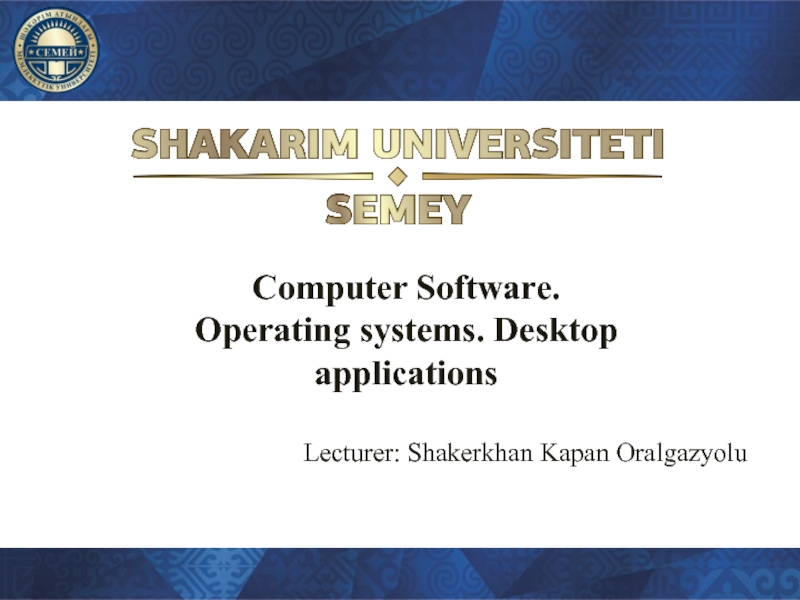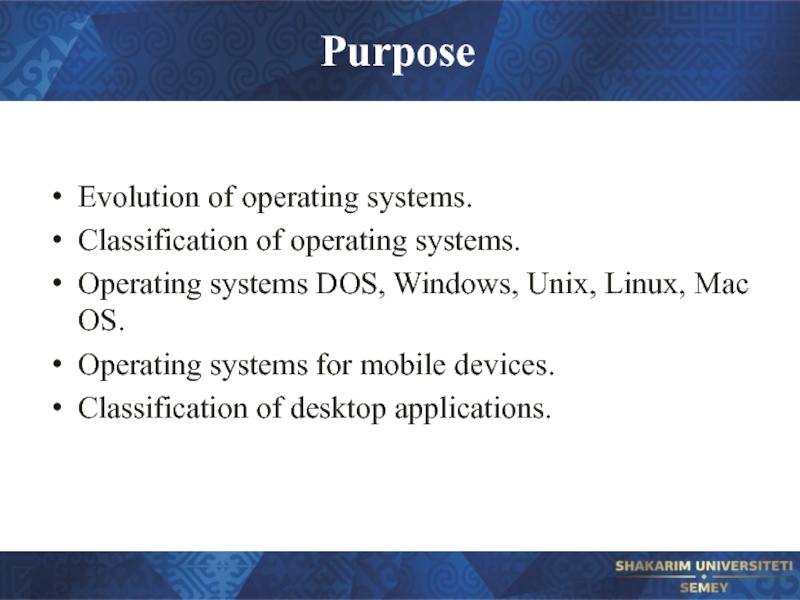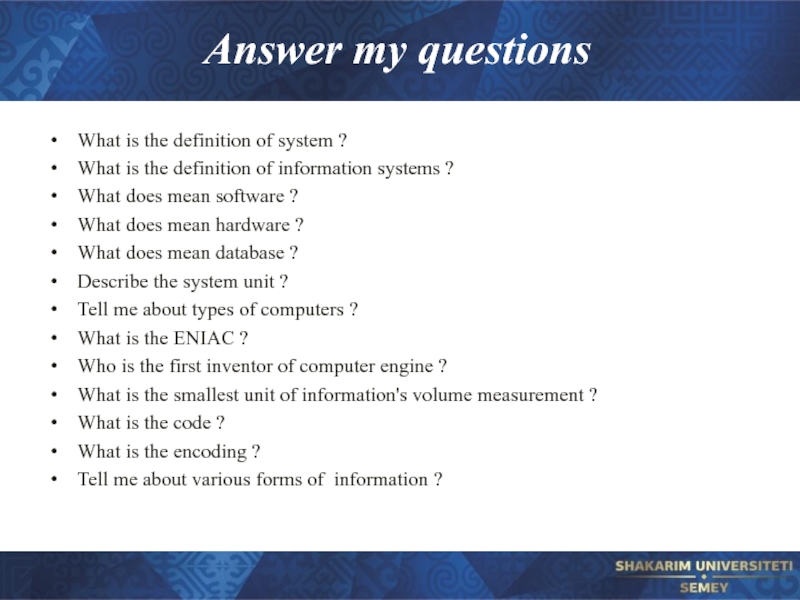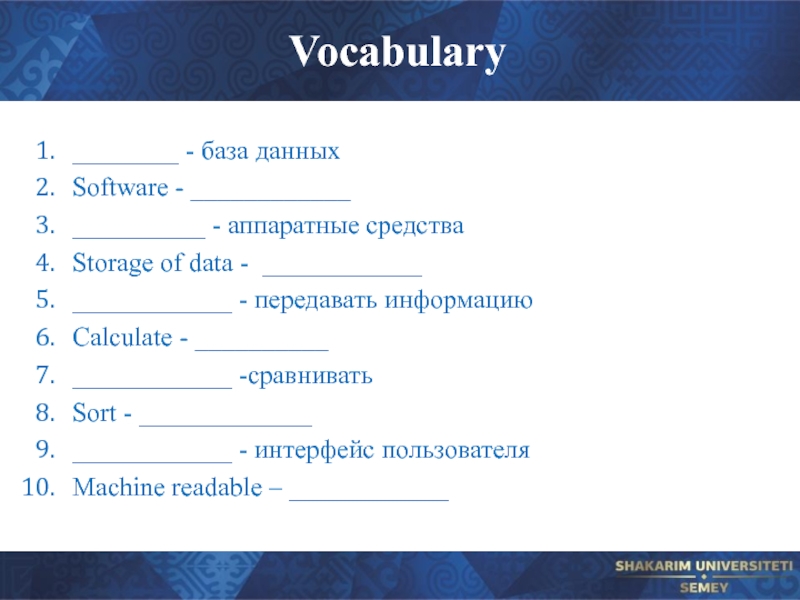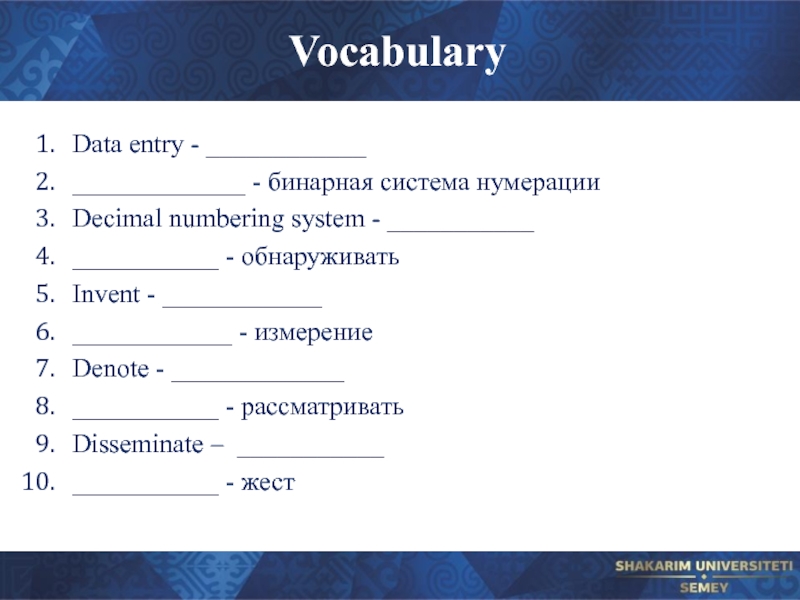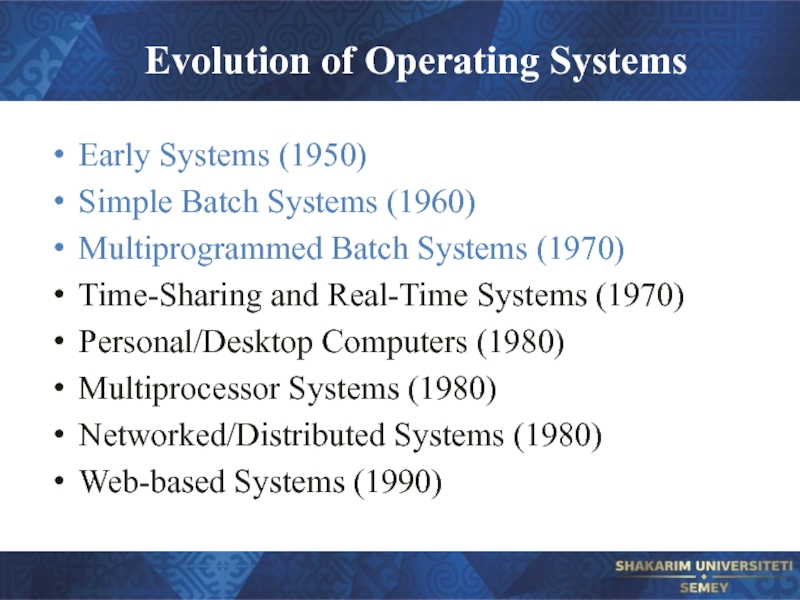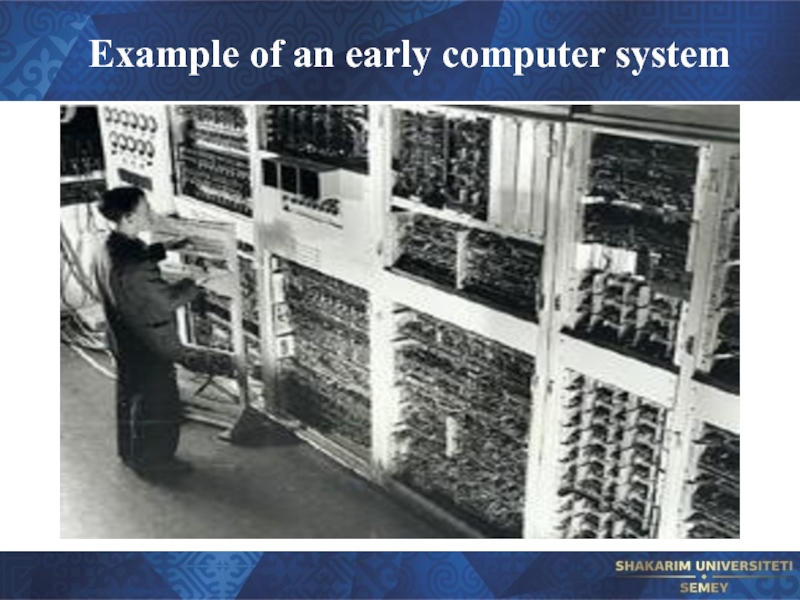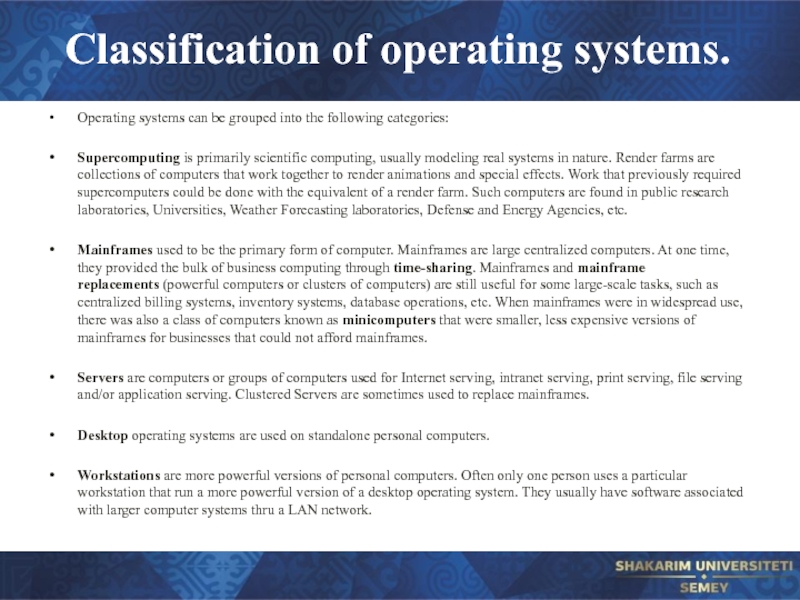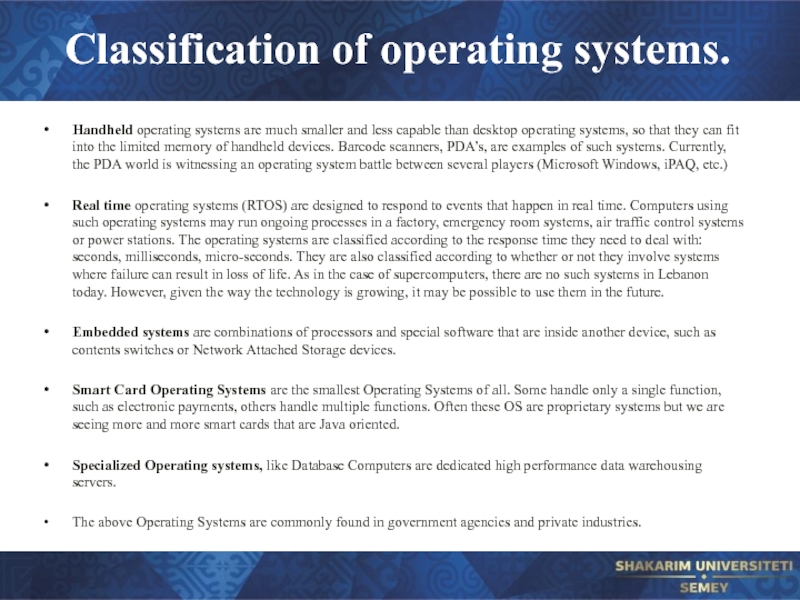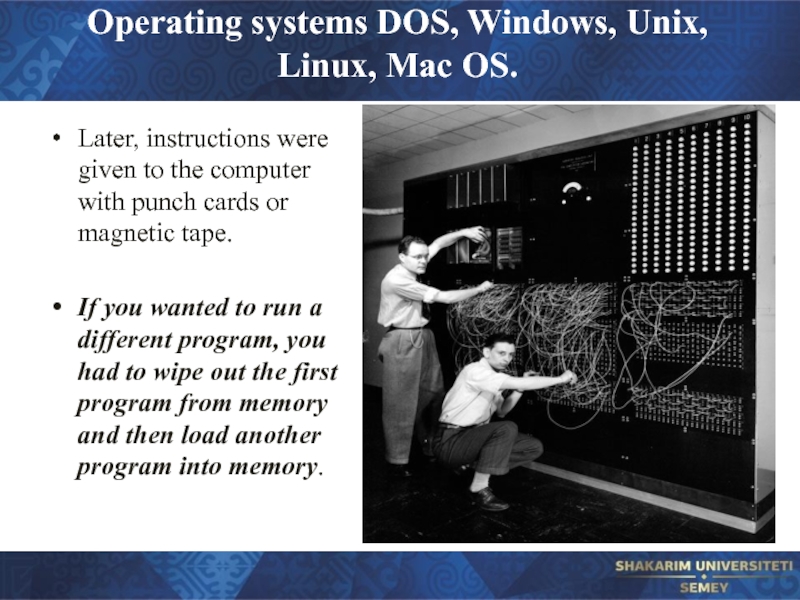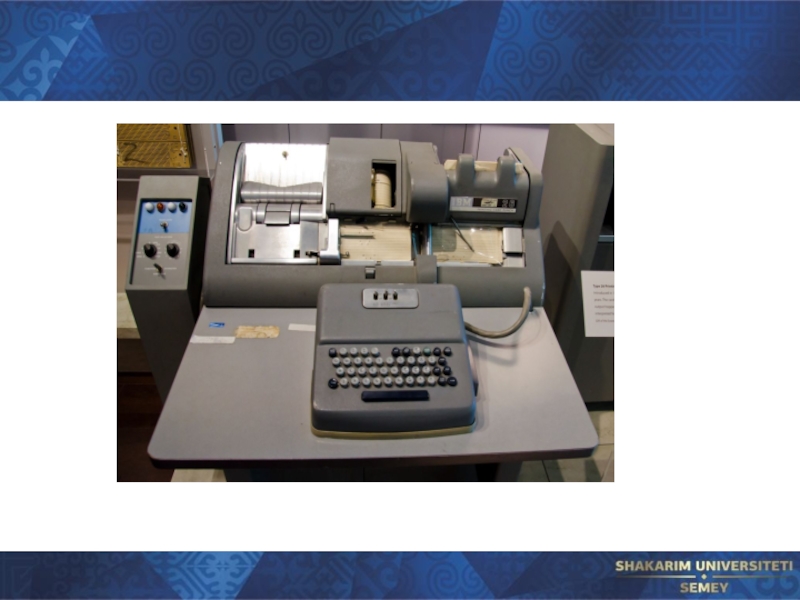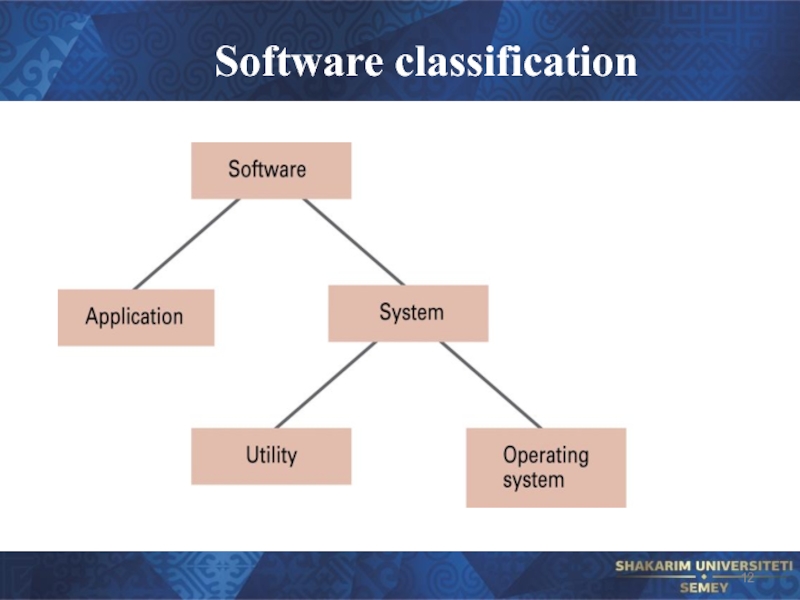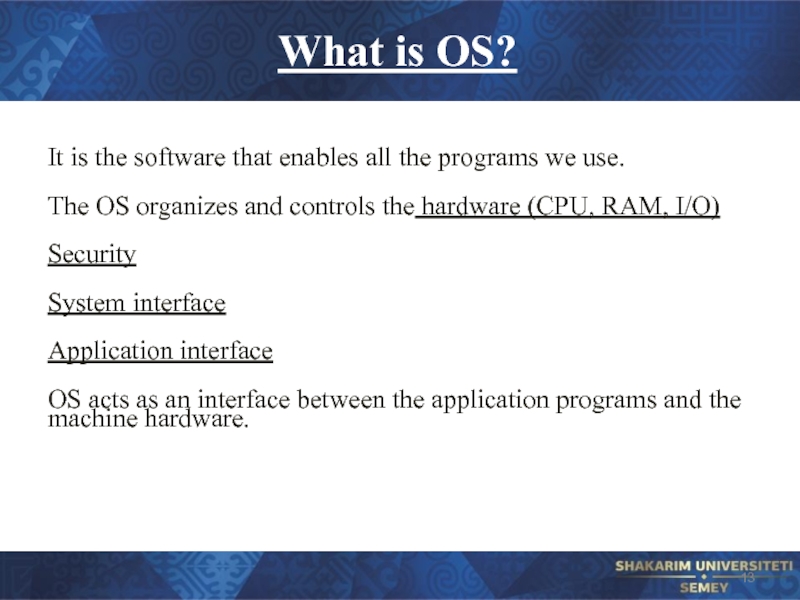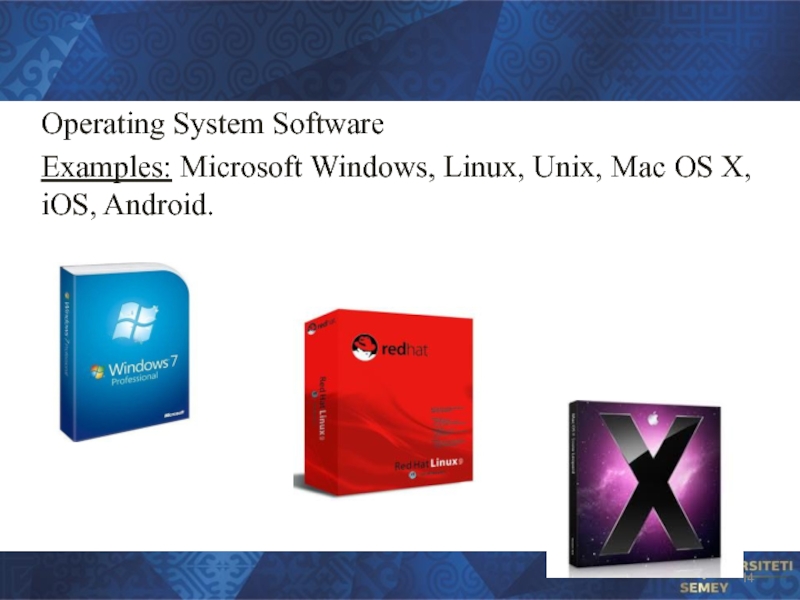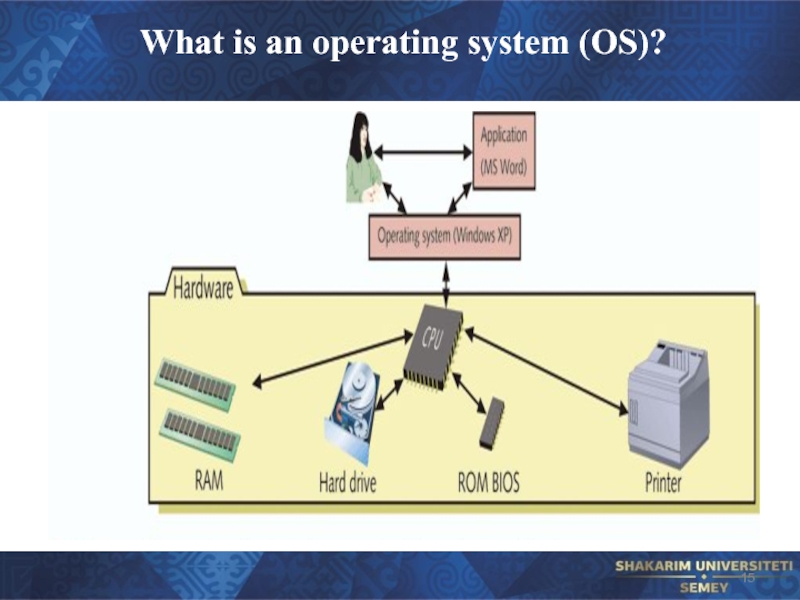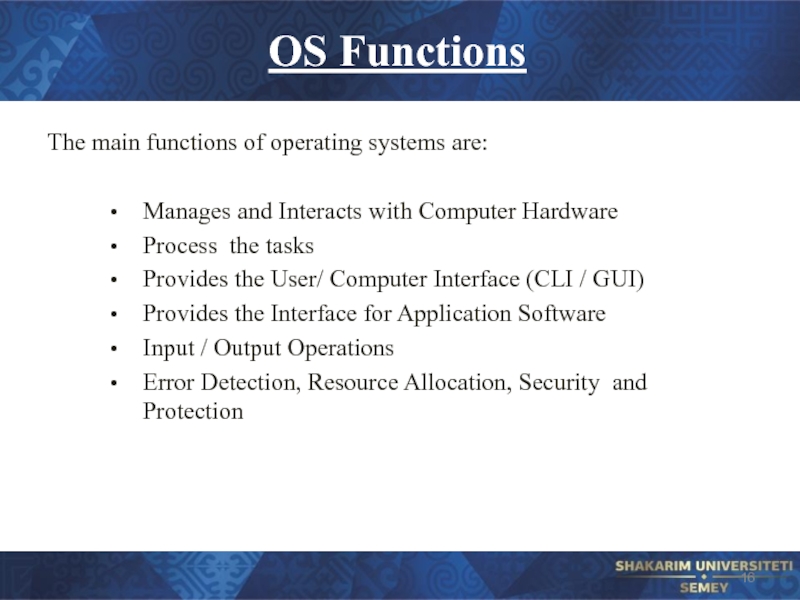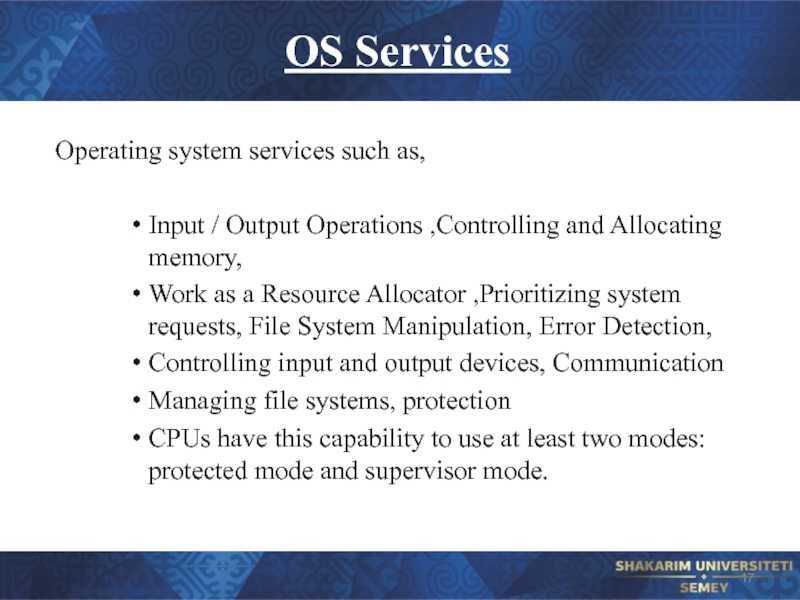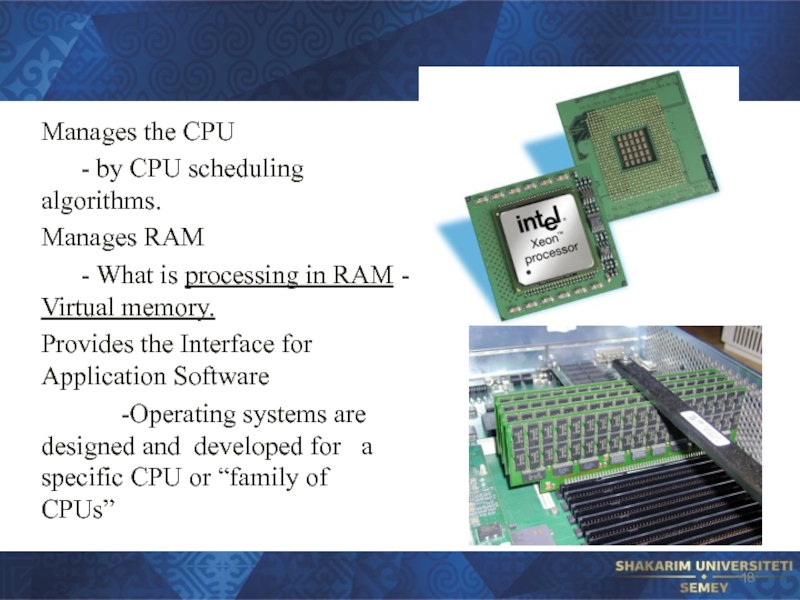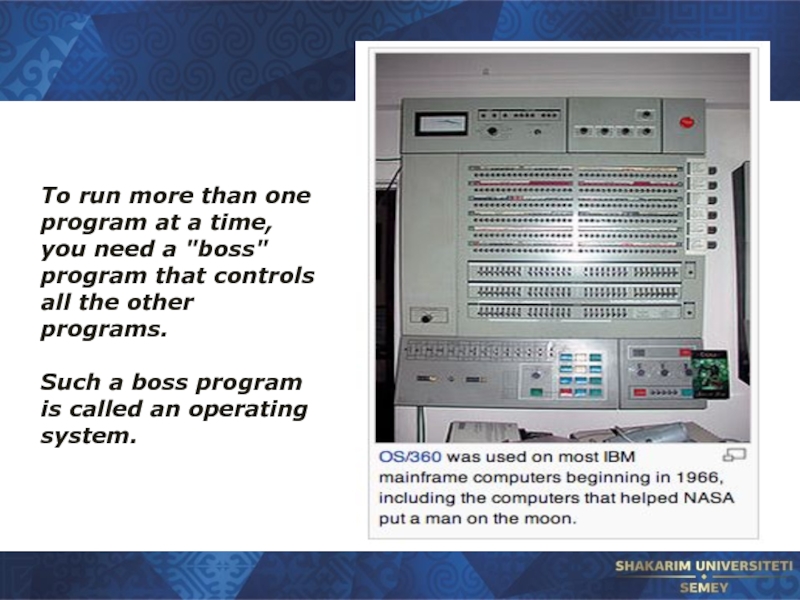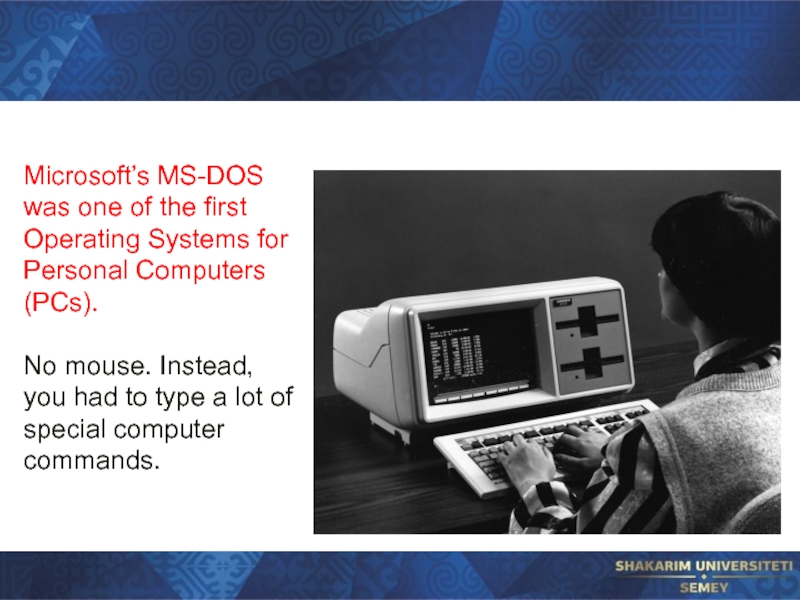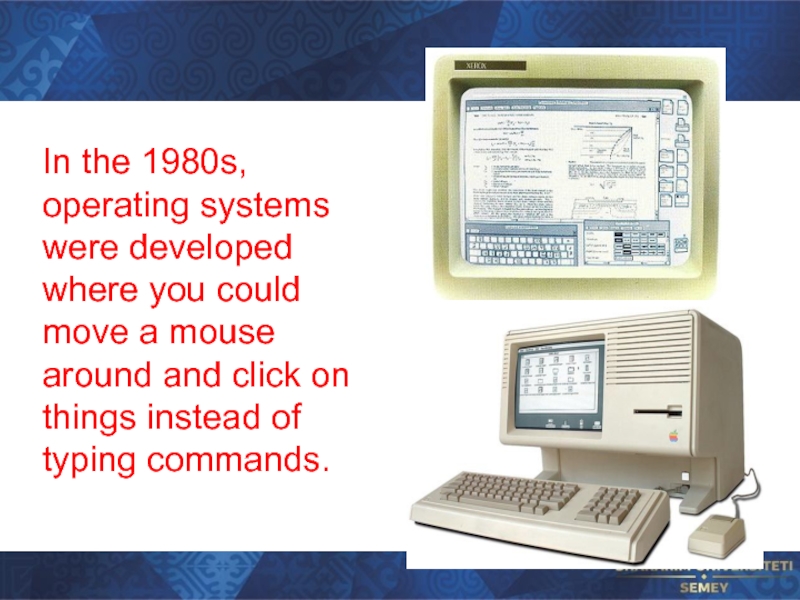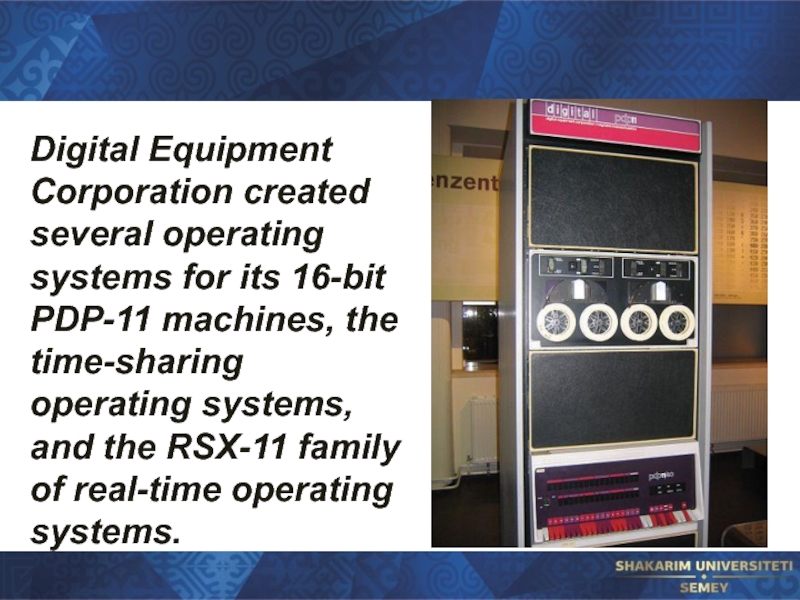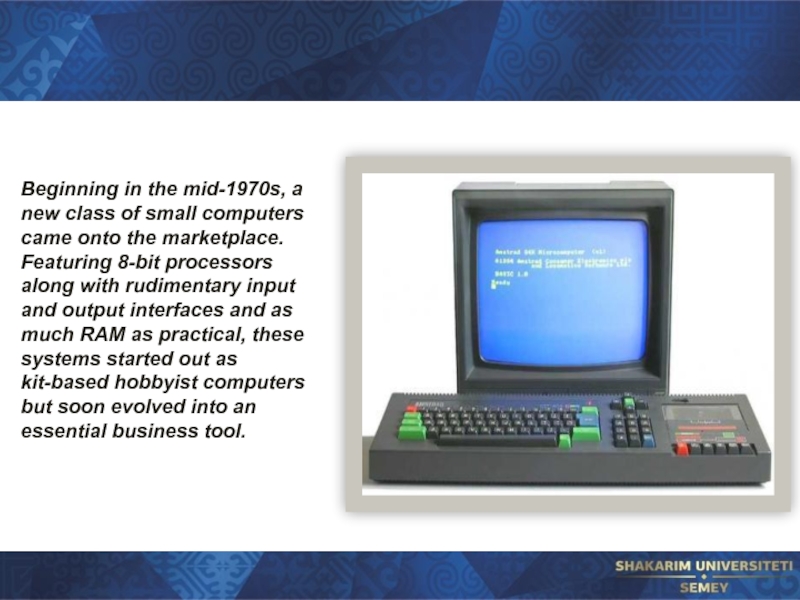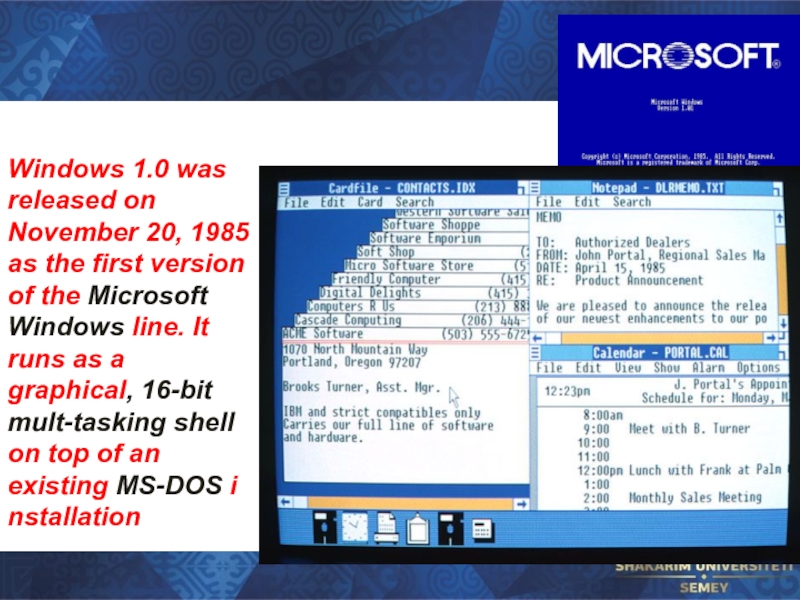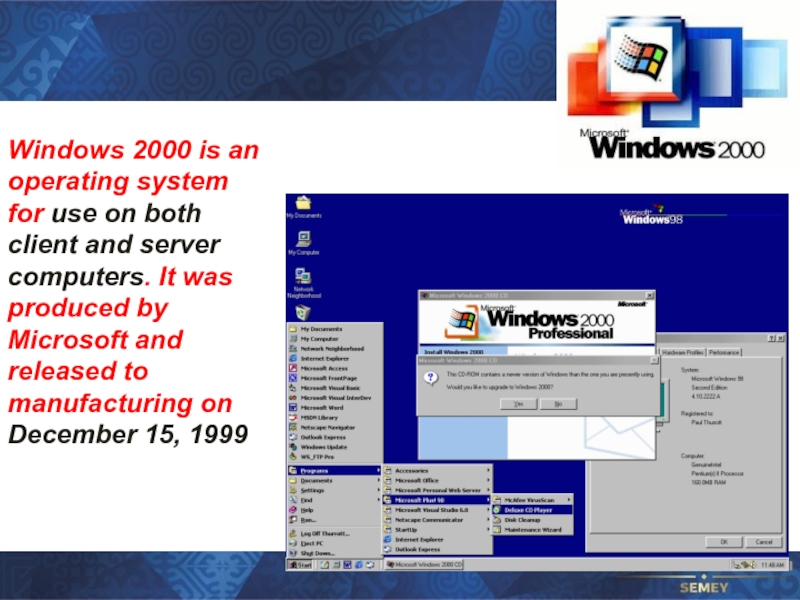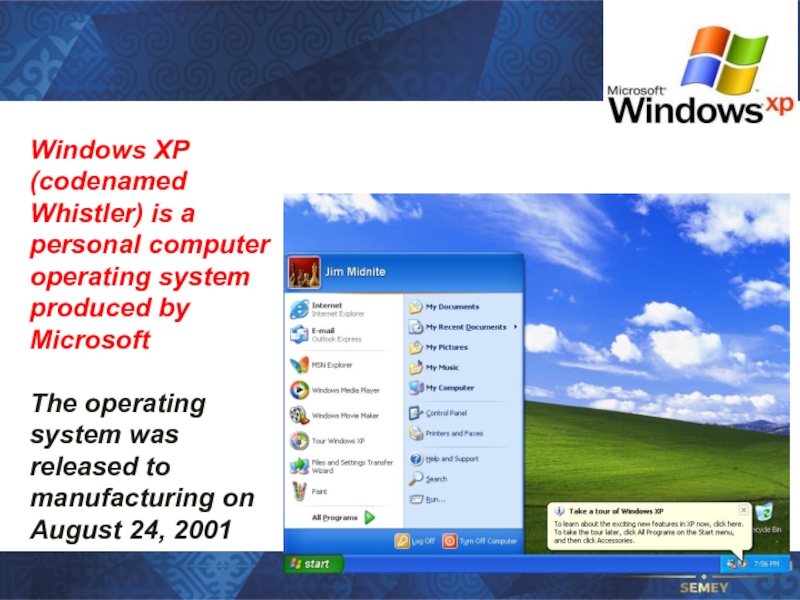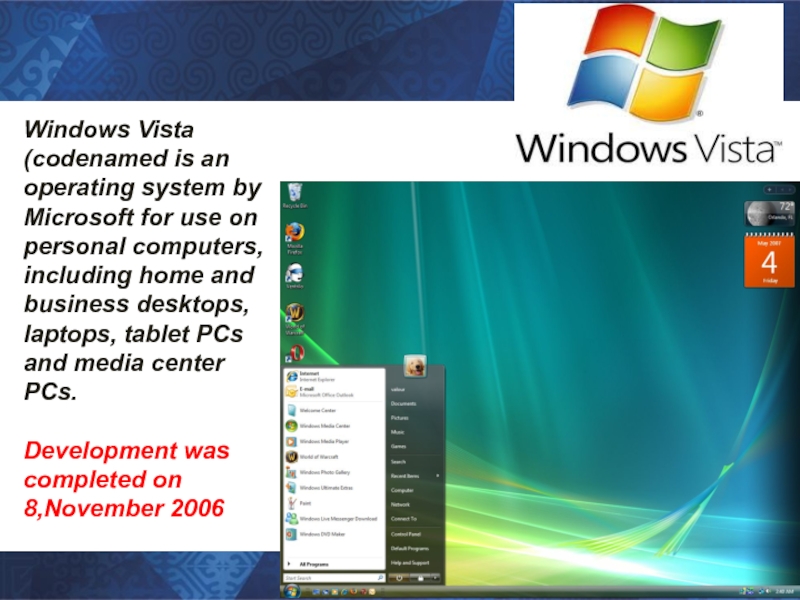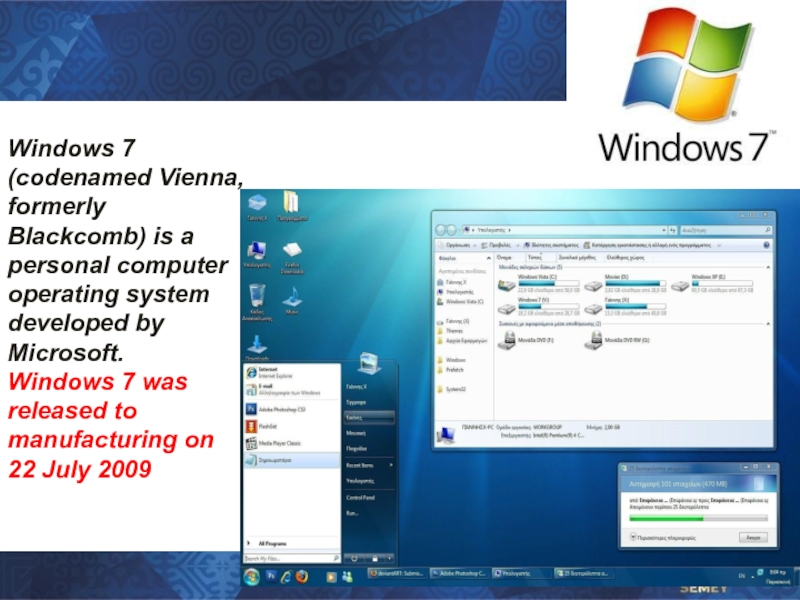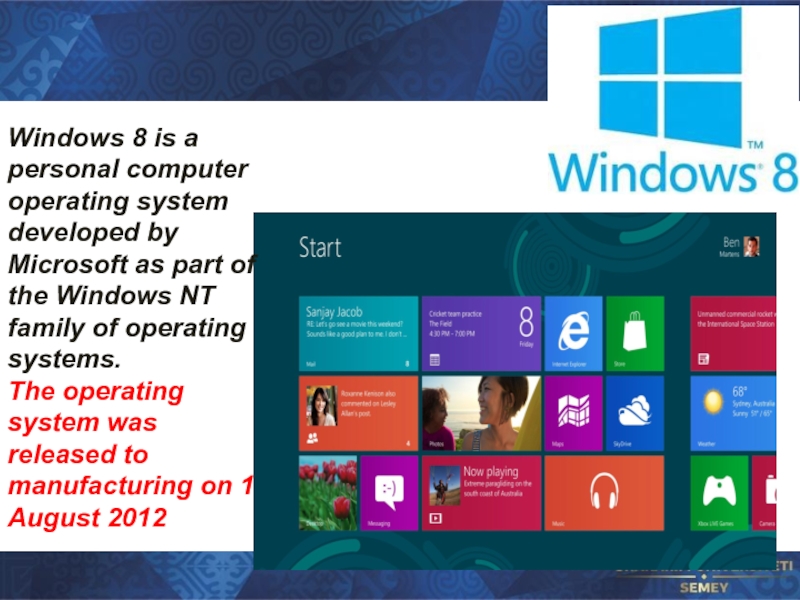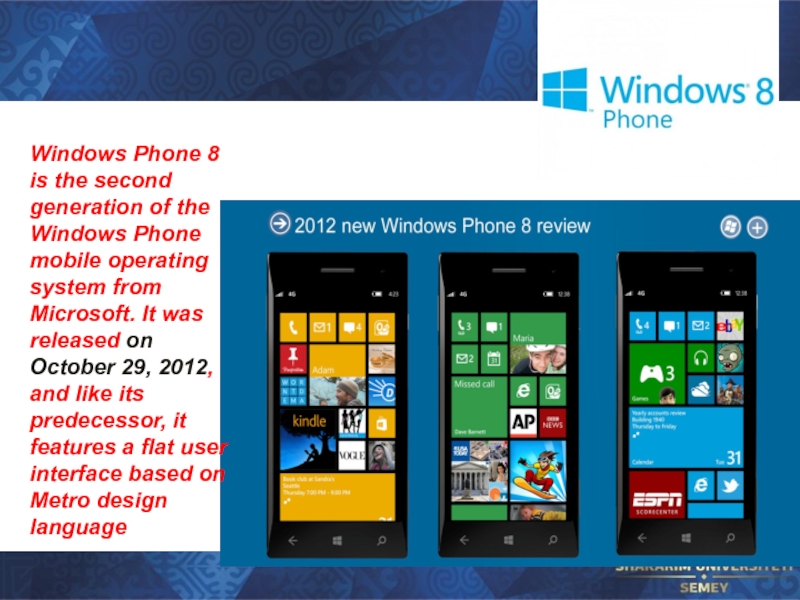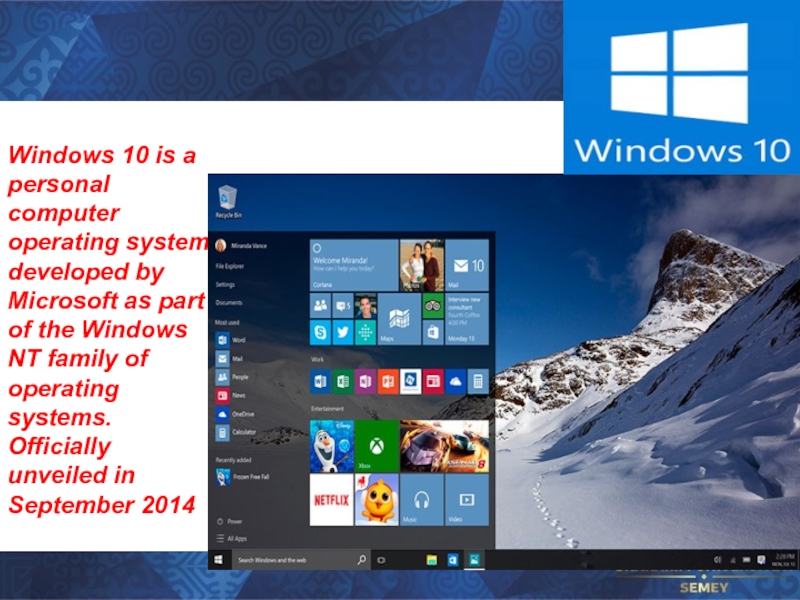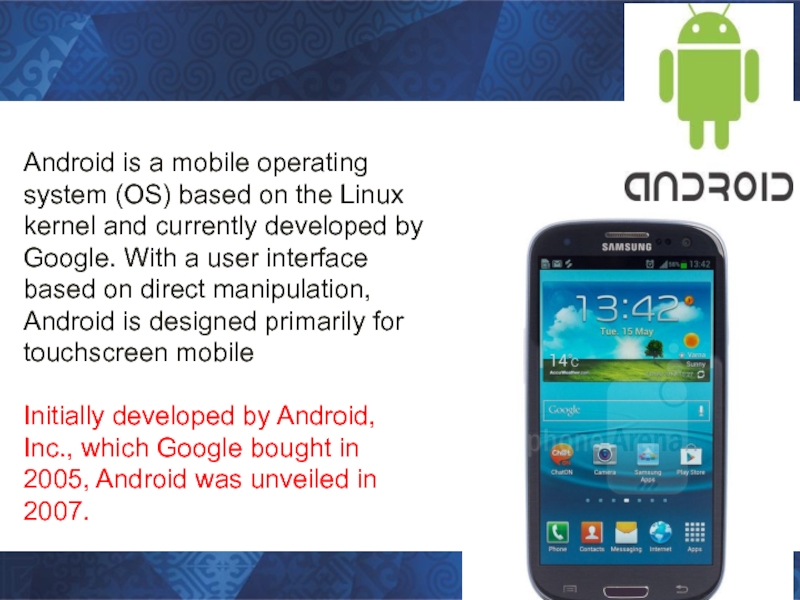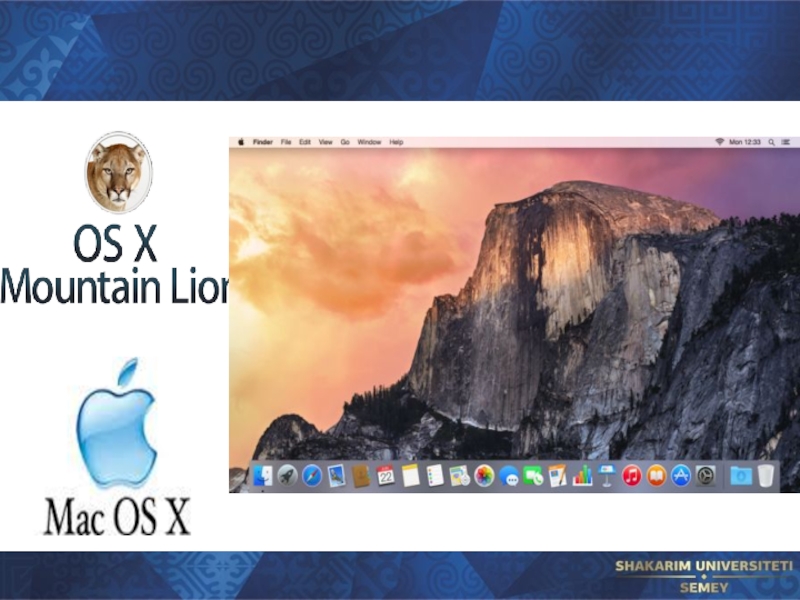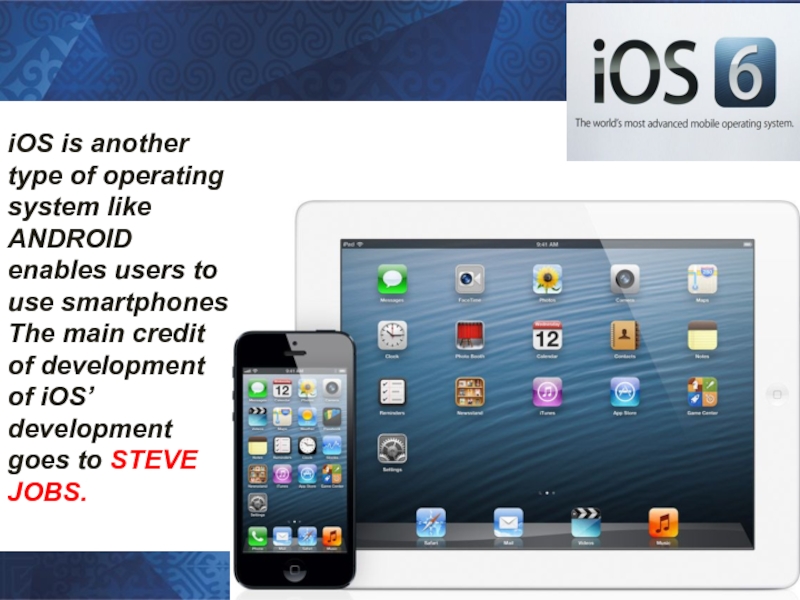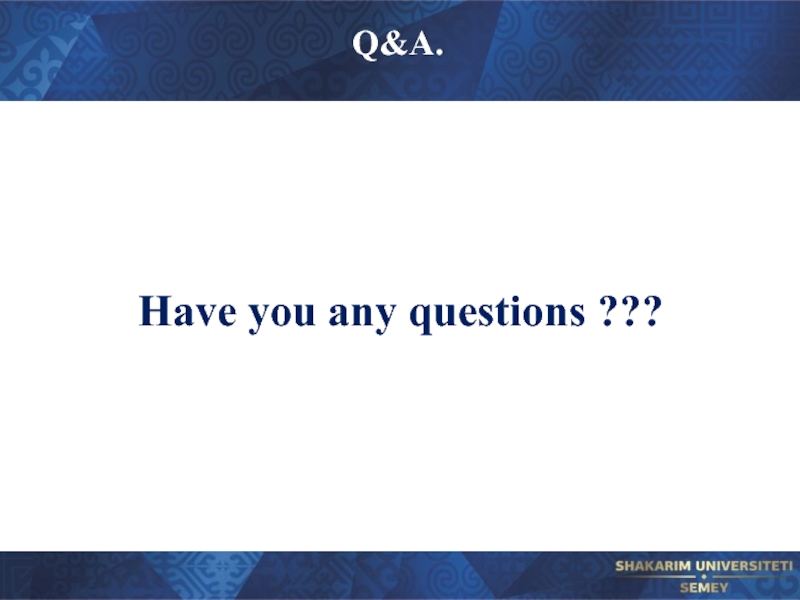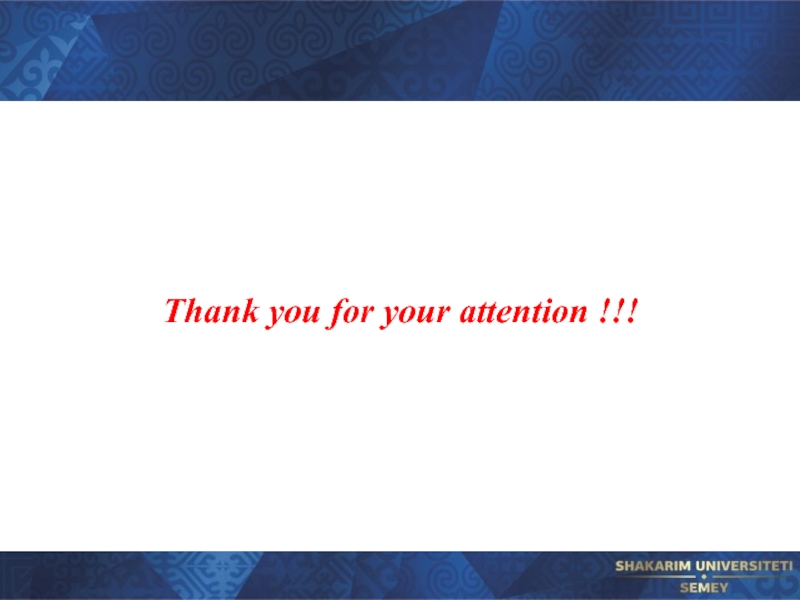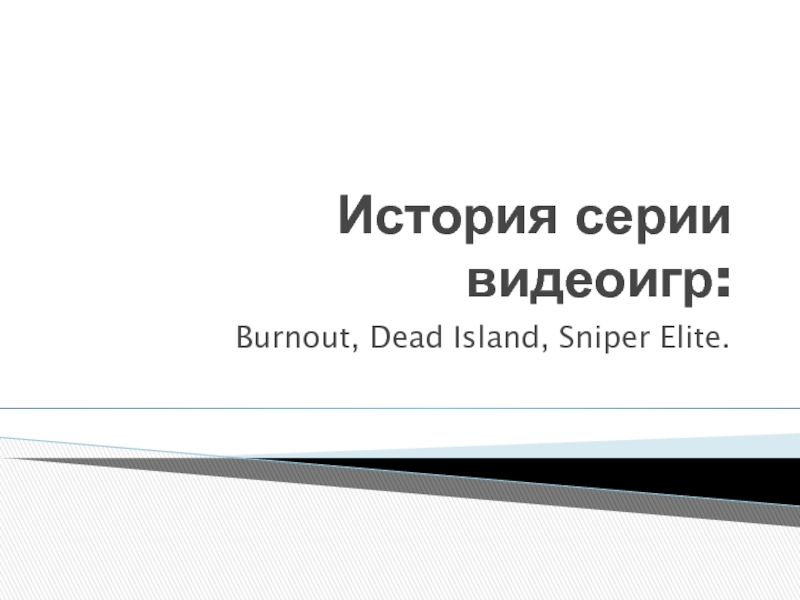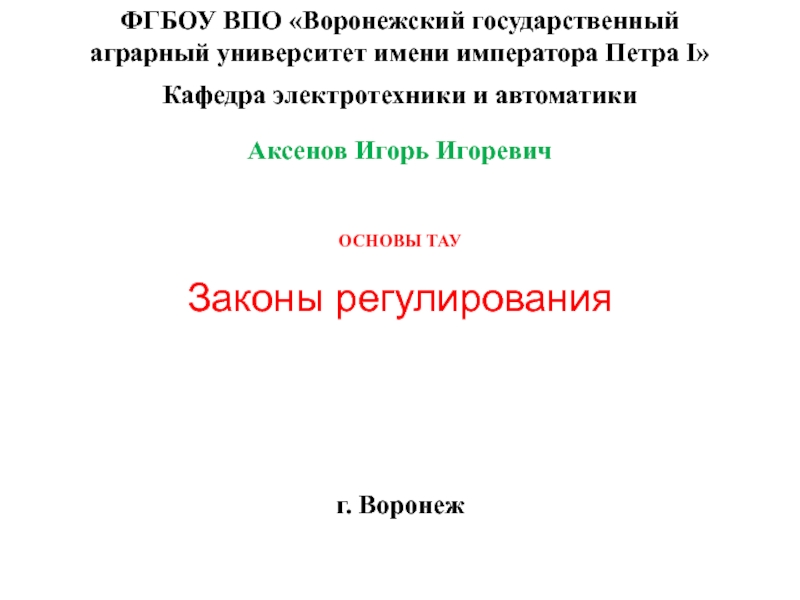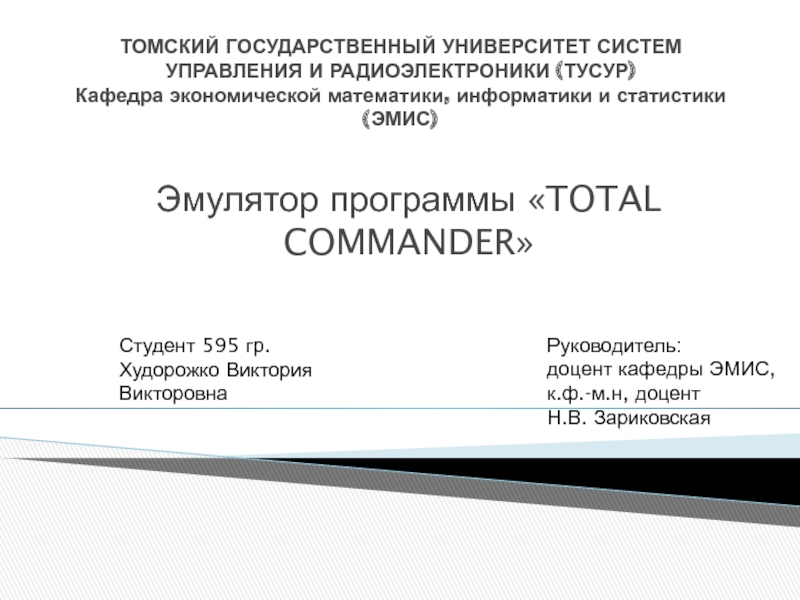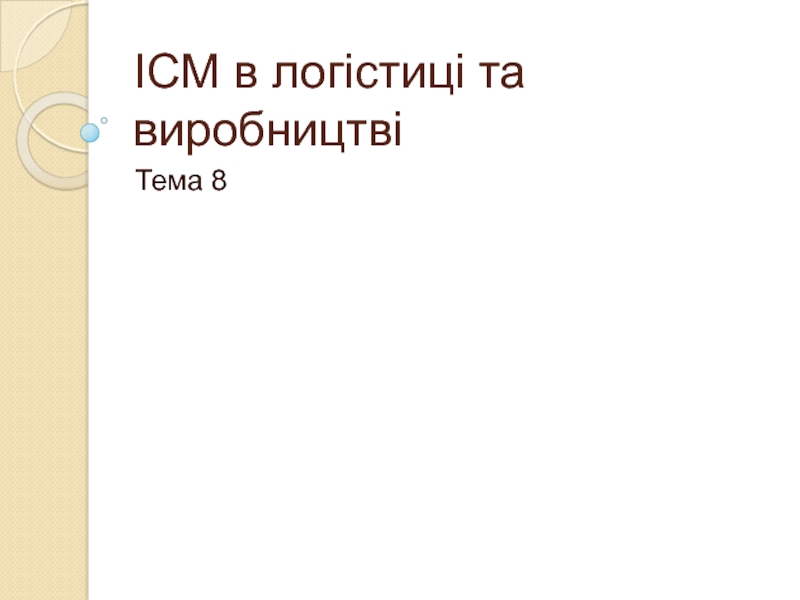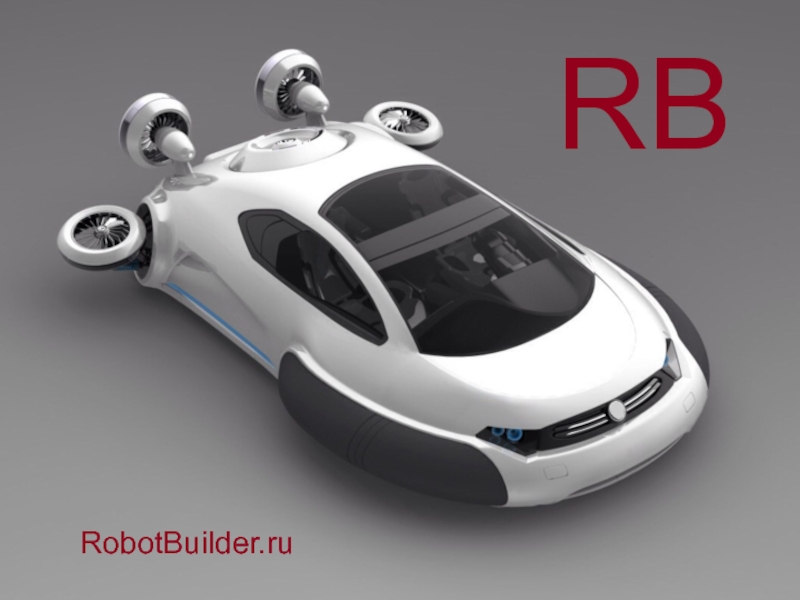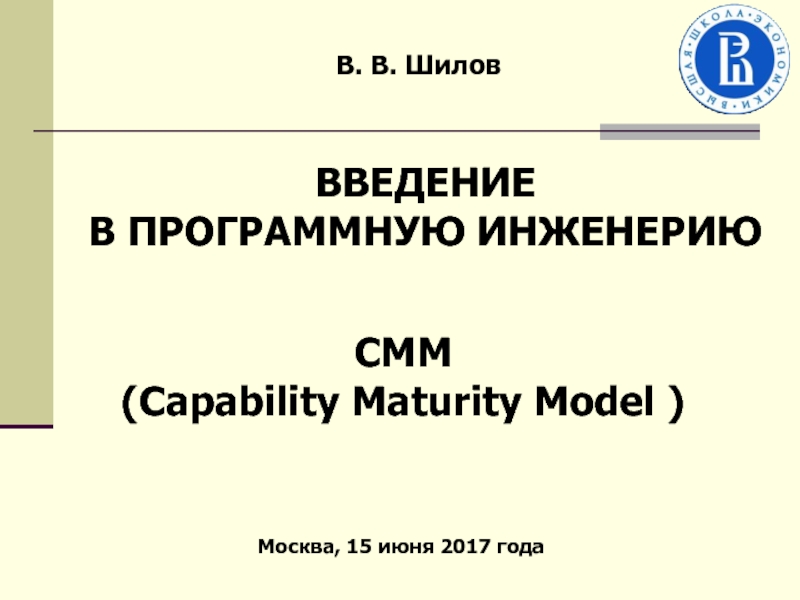- Главная
- Разное
- Дизайн
- Бизнес и предпринимательство
- Аналитика
- Образование
- Развлечения
- Красота и здоровье
- Финансы
- Государство
- Путешествия
- Спорт
- Недвижимость
- Армия
- Графика
- Культурология
- Еда и кулинария
- Лингвистика
- Английский язык
- Астрономия
- Алгебра
- Биология
- География
- Детские презентации
- Информатика
- История
- Литература
- Маркетинг
- Математика
- Медицина
- Менеджмент
- Музыка
- МХК
- Немецкий язык
- ОБЖ
- Обществознание
- Окружающий мир
- Педагогика
- Русский язык
- Технология
- Физика
- Философия
- Химия
- Шаблоны, картинки для презентаций
- Экология
- Экономика
- Юриспруденция
Computer Software. Operating systems. Desktop applications презентация
Содержание
- 1. Computer Software. Operating systems. Desktop applications
- 2. Purpose Evolution of operating systems. Classification of
- 3. Answer my questions What is
- 4. Vocabulary ________ - база данных Software -
- 5. Vocabulary Data entry - ____________ _____________ -
- 6. Evolution of Operating Systems Early Systems (1950)
- 7. Example of an early computer system
- 8. Classification of operating systems. Operating
- 9. Classification of operating systems.
- 10. Operating systems DOS, Windows, Unix, Linux,
- 12. Software classification
- 13. What is OS? It is the software
- 14. Operating System Software Examples: Microsoft Windows, Linux, Unix, Mac OS X, iOS, Android.
- 15. What is an operating system (OS)?
- 16. OS Functions The main functions of operating
- 17. OS Services Operating system services such
- 18. Manages the CPU - by CPU scheduling
- 19. To run more than one program at
- 20. Microsoft’s MS-DOS was one of the first
- 21. In the 1980s, operating systems were developed
- 22. Digital Equipment Corporation created several operating systems
- 23. Beginning in the mid-1970s, a new class
- 24. Windows 1.0 was released on November 20,
- 25. Windows 2000 is an operating system for
- 26. Windows XP (codenamed Whistler) is a personal
- 27. Windows Vista (codenamed is an operating system
- 28. Windows 7 (codenamed Vienna, formerly Blackcomb) is
- 29. Windows 8 is a personal computer operating
- 30. Windows Phone 8 is the second generation
- 31. Windows 10 is a personal computer operating
- 32. Android is a mobile operating system (OS)
- 34. iOS is another type of operating system
- 35. Q&A. Have you any questions ???
- 36. Thank you for your attention !!!
Слайд 1Computer Software.
Operating systems. Desktop
applications
Lecturer: Shakerkhan Kapan Oralgazyolu
Слайд 2Purpose
Evolution of operating systems.
Classification of operating systems.
Operating systems DOS, Windows, Unix,
Linux, Mac OS.
Operating systems for mobile devices.
Classification of desktop applications.
Operating systems for mobile devices.
Classification of desktop applications.
Слайд 3
Answer my questions
What is the definition of system ?
What is the
definition of information systems ?
What does mean software ?
What does mean hardware ?
What does mean database ?
Describe the system unit ?
Tell me about types of computers ?
What is the ENIAC ?
Who is the first inventor of computer engine ?
What is the smallest unit of information's volume measurement ?
What is the code ?
What is the encoding ?
Tell me about various forms of information ?
What does mean software ?
What does mean hardware ?
What does mean database ?
Describe the system unit ?
Tell me about types of computers ?
What is the ENIAC ?
Who is the first inventor of computer engine ?
What is the smallest unit of information's volume measurement ?
What is the code ?
What is the encoding ?
Tell me about various forms of information ?
Слайд 4Vocabulary
________ - база данных
Software - ____________
__________ - аппаратные средства
Storage of data
- ____________
____________ - передавать информацию
Calculate - __________
____________ -сравнивать
Sort - _____________
____________ - интерфейс пользователя
Machine readable – ____________
____________ - передавать информацию
Calculate - __________
____________ -сравнивать
Sort - _____________
____________ - интерфейс пользователя
Machine readable – ____________
Слайд 5Vocabulary
Data entry - ____________
_____________ - бинарная система нумерации
Decimal numbering system -
___________
___________ - обнаруживать
Invent - ____________
____________ - измерение
Denote - _____________
___________ - рассматривать
Disseminate – ___________
___________ - жест
___________ - обнаруживать
Invent - ____________
____________ - измерение
Denote - _____________
___________ - рассматривать
Disseminate – ___________
___________ - жест
Слайд 6Evolution of Operating Systems
Early Systems (1950)
Simple Batch Systems (1960)
Multiprogrammed Batch Systems
(1970)
Time-Sharing and Real-Time Systems (1970)
Personal/Desktop Computers (1980)
Multiprocessor Systems (1980)
Networked/Distributed Systems (1980)
Web-based Systems (1990)
Time-Sharing and Real-Time Systems (1970)
Personal/Desktop Computers (1980)
Multiprocessor Systems (1980)
Networked/Distributed Systems (1980)
Web-based Systems (1990)
Слайд 8
Classification of operating systems.
Operating systems can be grouped into the following
categories:
Supercomputing is primarily scientific computing, usually modeling real systems in nature. Render farms are collections of computers that work together to render animations and special effects. Work that previously required supercomputers could be done with the equivalent of a render farm. Such computers are found in public research laboratories, Universities, Weather Forecasting laboratories, Defense and Energy Agencies, etc.
Mainframes used to be the primary form of computer. Mainframes are large centralized computers. At one time, they provided the bulk of business computing through time-sharing. Mainframes and mainframe replacements (powerful computers or clusters of computers) are still useful for some large-scale tasks, such as centralized billing systems, inventory systems, database operations, etc. When mainframes were in widespread use, there was also a class of computers known as minicomputers that were smaller, less expensive versions of mainframes for businesses that could not afford mainframes.
Servers are computers or groups of computers used for Internet serving, intranet serving, print serving, file serving and/or application serving. Clustered Servers are sometimes used to replace mainframes.
Desktop operating systems are used on standalone personal computers.
Workstations are more powerful versions of personal computers. Often only one person uses a particular workstation that run a more powerful version of a desktop operating system. They usually have software associated with larger computer systems thru a LAN network.
Supercomputing is primarily scientific computing, usually modeling real systems in nature. Render farms are collections of computers that work together to render animations and special effects. Work that previously required supercomputers could be done with the equivalent of a render farm. Such computers are found in public research laboratories, Universities, Weather Forecasting laboratories, Defense and Energy Agencies, etc.
Mainframes used to be the primary form of computer. Mainframes are large centralized computers. At one time, they provided the bulk of business computing through time-sharing. Mainframes and mainframe replacements (powerful computers or clusters of computers) are still useful for some large-scale tasks, such as centralized billing systems, inventory systems, database operations, etc. When mainframes were in widespread use, there was also a class of computers known as minicomputers that were smaller, less expensive versions of mainframes for businesses that could not afford mainframes.
Servers are computers or groups of computers used for Internet serving, intranet serving, print serving, file serving and/or application serving. Clustered Servers are sometimes used to replace mainframes.
Desktop operating systems are used on standalone personal computers.
Workstations are more powerful versions of personal computers. Often only one person uses a particular workstation that run a more powerful version of a desktop operating system. They usually have software associated with larger computer systems thru a LAN network.
Слайд 9
Classification of operating systems.
Handheld operating systems are much smaller and less capable
than desktop operating systems, so that they can fit into the limited memory of handheld devices. Barcode scanners, PDA’s, are examples of such systems. Currently, the PDA world is witnessing an operating system battle between several players (Microsoft Windows, iPAQ, etc.)
Real time operating systems (RTOS) are designed to respond to events that happen in real time. Computers using such operating systems may run ongoing processes in a factory, emergency room systems, air traffic control systems or power stations. The operating systems are classified according to the response time they need to deal with: seconds, milliseconds, micro-seconds. They are also classified according to whether or not they involve systems where failure can result in loss of life. As in the case of supercomputers, there are no such systems in Lebanon today. However, given the way the technology is growing, it may be possible to use them in the future.
Embedded systems are combinations of processors and special software that are inside another device, such as contents switches or Network Attached Storage devices.
Smart Card Operating Systems are the smallest Operating Systems of all. Some handle only a single function, such as electronic payments, others handle multiple functions. Often these OS are proprietary systems but we are seeing more and more smart cards that are Java oriented.
Specialized Operating systems, like Database Computers are dedicated high performance data warehousing servers.
The above Operating Systems are commonly found in government agencies and private industries.
Real time operating systems (RTOS) are designed to respond to events that happen in real time. Computers using such operating systems may run ongoing processes in a factory, emergency room systems, air traffic control systems or power stations. The operating systems are classified according to the response time they need to deal with: seconds, milliseconds, micro-seconds. They are also classified according to whether or not they involve systems where failure can result in loss of life. As in the case of supercomputers, there are no such systems in Lebanon today. However, given the way the technology is growing, it may be possible to use them in the future.
Embedded systems are combinations of processors and special software that are inside another device, such as contents switches or Network Attached Storage devices.
Smart Card Operating Systems are the smallest Operating Systems of all. Some handle only a single function, such as electronic payments, others handle multiple functions. Often these OS are proprietary systems but we are seeing more and more smart cards that are Java oriented.
Specialized Operating systems, like Database Computers are dedicated high performance data warehousing servers.
The above Operating Systems are commonly found in government agencies and private industries.
Слайд 10
Operating systems DOS, Windows, Unix, Linux, Mac OS.
Later, instructions were given
to the computer with punch cards or magnetic tape.
If you wanted to run a different program, you had to wipe out the first program from memory and then load another program into memory.
If you wanted to run a different program, you had to wipe out the first program from memory and then load another program into memory.
Слайд 13What is OS?
It is the software that enables all the programs
we use.
The OS organizes and controls the hardware (CPU, RAM, I/O)
Security
System interface
Application interface
OS acts as an interface between the application programs and the machine hardware.
The OS organizes and controls the hardware (CPU, RAM, I/O)
Security
System interface
Application interface
OS acts as an interface between the application programs and the machine hardware.
Слайд 16OS Functions
The main functions of operating systems are:
Manages and Interacts with
Computer Hardware
Process the tasks
Provides the User/ Computer Interface (CLI / GUI)
Provides the Interface for Application Software
Input / Output Operations
Error Detection, Resource Allocation, Security and Protection
Process the tasks
Provides the User/ Computer Interface (CLI / GUI)
Provides the Interface for Application Software
Input / Output Operations
Error Detection, Resource Allocation, Security and Protection
Слайд 17OS Services
Operating system services such as,
Input / Output Operations
,Controlling and Allocating memory,
Work as a Resource Allocator ,Prioritizing system requests, File System Manipulation, Error Detection,
Controlling input and output devices, Communication
Managing file systems, protection
CPUs have this capability to use at least two modes: protected mode and supervisor mode.
Work as a Resource Allocator ,Prioritizing system requests, File System Manipulation, Error Detection,
Controlling input and output devices, Communication
Managing file systems, protection
CPUs have this capability to use at least two modes: protected mode and supervisor mode.
Слайд 18Manages the CPU
- by CPU scheduling
algorithms.
Manages RAM
- What is processing in RAM - Virtual memory.
Provides the Interface for Application Software
-Operating systems are designed and developed for a specific CPU or “family of CPUs”
Manages RAM
- What is processing in RAM - Virtual memory.
Provides the Interface for Application Software
-Operating systems are designed and developed for a specific CPU or “family of CPUs”
Слайд 19To run more than one program at a time, you need
a "boss" program that controls all the other programs.
Such a boss program is called an operating system.
Such a boss program is called an operating system.
Слайд 20Microsoft’s MS-DOS was one of the first Operating Systems for Personal
Computers (PCs).
No mouse. Instead, you had to type a lot of special computer commands.
No mouse. Instead, you had to type a lot of special computer commands.
Слайд 21In the 1980s, operating systems were developed where you could move
a mouse around and click on things instead of typing commands.
Слайд 22Digital Equipment Corporation created several operating systems for its 16-bit PDP-11
machines, the time-sharing operating systems, and the RSX-11 family of real-time operating systems.
Слайд 23Beginning in the mid-1970s, a new class of small computers came
onto the marketplace. Featuring 8-bit processors along with rudimentary input and output interfaces and as much RAM as practical, these systems started out as kit-based hobbyist computers but soon evolved into an essential business tool.
Слайд 24Windows 1.0 was released on November 20, 1985 as the first
version of the Microsoft Windows line. It runs as a graphical, 16-bit mult-tasking shell on top of an existing MS-DOS installation
Слайд 25Windows 2000 is an operating system for use on both client
and server computers. It was produced by Microsoft and released to manufacturing on December 15, 1999
Слайд 26Windows XP (codenamed Whistler) is a personal computer operating system produced
by Microsoft
The operating system was released to manufacturing on August 24, 2001
The operating system was released to manufacturing on August 24, 2001
Слайд 27Windows Vista (codenamed is an operating system by Microsoft for use
on personal computers, including home and business desktops, laptops, tablet PCs and media center PCs.
Development was completed on 8,November 2006
Development was completed on 8,November 2006
Слайд 28Windows 7 (codenamed Vienna, formerly Blackcomb) is a personal computer operating
system developed by Microsoft.
Windows 7 was released to manufacturing on 22 July 2009
Windows 7 was released to manufacturing on 22 July 2009
Слайд 29Windows 8 is a personal computer operating system developed by Microsoft
as part of the Windows NT family of operating systems.
The operating system was released to manufacturing on 1 August 2012
The operating system was released to manufacturing on 1 August 2012
Слайд 30Windows Phone 8 is the second generation of the Windows Phone
mobile operating system from Microsoft. It was released on October 29, 2012, and like its predecessor, it features a flat user interface based on Metro design language
Слайд 31Windows 10 is a personal computer operating system developed by Microsoft
as part of the Windows NT family of operating systems. Officially unveiled in September 2014
Слайд 32Android is a mobile operating system (OS) based on the Linux
kernel and currently developed by Google. With a user interface based on direct manipulation, Android is designed primarily for touchscreen mobile
Initially developed by Android, Inc., which Google bought in 2005, Android was unveiled in 2007.
Initially developed by Android, Inc., which Google bought in 2005, Android was unveiled in 2007.
Слайд 34iOS is another type of operating system like ANDROID enables users
to use smartphones
The main credit of development of iOS’ development goes to STEVE JOBS.
The main credit of development of iOS’ development goes to STEVE JOBS.
